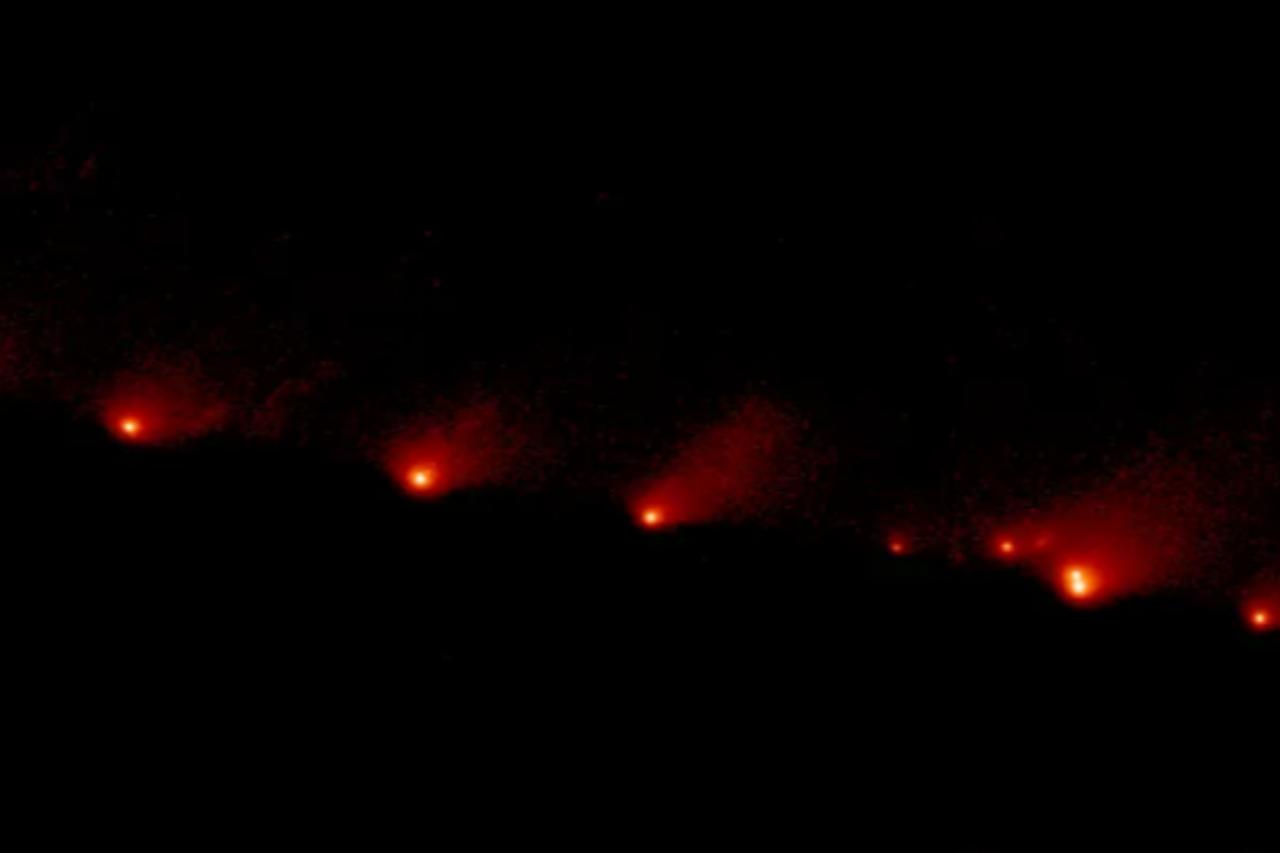
An interstellar visitor hurtling through the solar system is expelling water at extraordinary volumes, offering scientists an unprecedented window into the chemical makeup of distant planetary systems.
The comet, designated 3I/ATLAS, is releasing nearly 40 kilograms of water every second despite being nearly three times farther from the sun than Earth — a discovery that has surprised researchers studying how worlds form beyond our cosmic neighborhood.
NASA's Neil Gehrels Swift Observatory detected the ultraviolet fingerprint of hydroxyl, a molecule created when sunlight breaks apart water, during observations conducted between July and August 2025. The volume of water loss far exceeds what scientists anticipated at such a remote distance from the sun's heat.
"When we detect water — or even its faint ultraviolet echo, OH — from an interstellar comet, we're reading a note from another planetary system," said Dennis Bodewits, a physics professor at Auburn University. "It tells us that the ingredients for life's chemistry are not unique to our own."
The findings, published last month in the Astrophysical Journal Letters, suggest the comet's intense activity may originate not from its frozen surface but from debris surrounding it. Data from Gemini South and NASA's Infrared Telescope Facility indicate that ice fragments in the comet's coma function like miniature geysers when exposed to sunlight.
Zexi Xing, a postdoctoral researcher at Auburn University who led the study, said each interstellar comet has defied expectations. The first such visitor, 'Oumuamua, appeared dry. The second, Borisov, showed high concentrations of carbon monoxide.
"Every interstellar comet so far has been a surprise," Xing said. "'Oumuamua was dry, Borisov was rich in carbon monoxide, and now ATLAS is giving up water at a distance where we didn't expect it. Each one is rewriting what we thought we knew about how planets and comets form around stars."
After disappearing from Swift's detection range, 3I/ATLAS was observed in early October by the European Space Agency's Mars orbiters. The agency's Jupiter Icy Moons Explorer spacecraft is scheduled to track the comet in November as it makes its closest pass by the sun.
Scientists anticipate JUICE will capture the most detailed observations yet of the comet's water release, though communication limitations mean data may not reach Earth until February 2026.
The discovery adds to growing evidence that the building blocks necessary for life exist throughout the galaxy, carried by objects that wander between star systems.